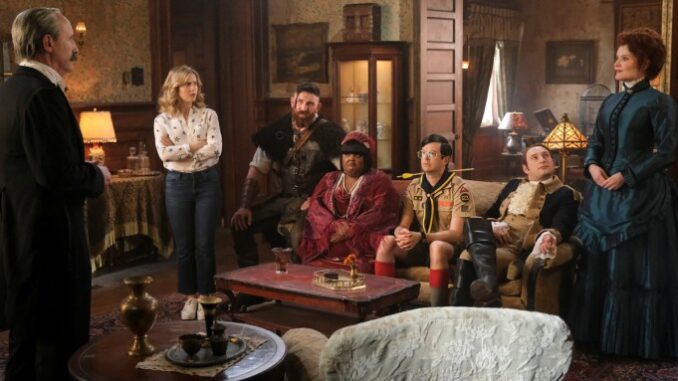
The air in the Library of Congress is always thick with the presence of the past. It clings to the polished marble, whispers from the vast, silent aisles of books, and shimmers in the filtered light that falls upon countless pages of history. It is a mausoleum of memory, a vibrant reliquary of human endeavor. So, when the institution announced a special, "haunting" screening of a film titled Ghosts (or perhaps, a film about ghosts), it felt less like a novelty and more like a destined, almost ritualistic, event. The Library wasn't just hosting a movie; it was orchestrating a cultural séance, inviting the spectral back into its hallowed halls.
To step into the Coolidge Auditorium for such an event is to enter a liminal space, poised between the grandeur of the present and the echoes of what has been. The usual hushed reverence of the Library deepens into something more profound as the lights dim. The projector, a mechanical heart beating at the back of the hall, casts its solitary beam, a luminous bridge stretching into the darkness, connecting the audience to the flickering images that are about to materialize. One can almost feel the spirits of forgotten scholars, of literary giants, of presidents and poets, gathering in the periphery, drawn by the magnetic pull of storytelling, by the very act of summoning.
The film, whatever its specific narrative, becomes more than just celluloid. In the Library of Congress, it transforms into a living artifact. If it's an old film, perhaps a silent masterpiece, its very age speaks volumes. The scratches on the print, the subtle warping of the image, the occasional flicker – these aren't imperfections; they are the scars of time, the visual equivalent of a faded letter, a whisper from a distant era. The actors, long since gone, move with a startling, almost unnerving, vitality. Their gestures, their expressions, are ghost-like in their captured permanence, a paradox of life frozen in time. They are, in essence, the ghosts of cinema themselves, resurrected for one more performance.
As the story unfolds, the spectral figures on screen begin to bleed into the atmospheric reality of the Library. A cold shiver that might be the building's ancient air conditioning or a sudden draught of collective anxiety. The creak of a distant floorboard, amplified by the focused silence, becomes the footsteps of something unseen. Every shadow cast by the projector's light seems to lengthen and deepen, transforming familiar architectural details into monstrous, watchful visages. The audience, a collective of silent voyeurs, becomes acutely aware of their own vulnerability, their own susceptibility to the uncanny. They are not just watching a film; they are participating in a shared haunting.
What makes this experience truly illustrative is the profound metaphorical resonance between the Library of Congress and the concept of ghosts. The Library itself is a monumental archive of human existence – every book, every photograph, every sound recording, every piece of film is a captured fragment of a life, an idea, an event that has passed. These are the ghosts of history, carefully cataloged and preserved, waiting for someone to open a binding, press play, or cast a light, to briefly reanimate them. The screening of Ghosts within these walls is merely a focused manifestation of the Library’s ongoing purpose: to conjure, to present, and to preserve the spectral presence of the past, ensuring that its whispers never truly fade.
As the credits roll and the house lights slowly rise, there’s a collective sigh, a release of held breath. The logical mind reasserts itself, separating fiction from reality. Yet, something lingers. The Library of Congress, in hosting a haunting screening of Ghosts, doesn't just entertain; it illuminates its own profound nature. It reminds us that every archive is, in its own way, a haunted house – a place where the echoes of lives lived, stories told, and moments passed, reside in eternal, spectral readiness, waiting for us to listen, and to see. And in that, there is both a chilling beauty and a timeless, comforting sense of continuity.
